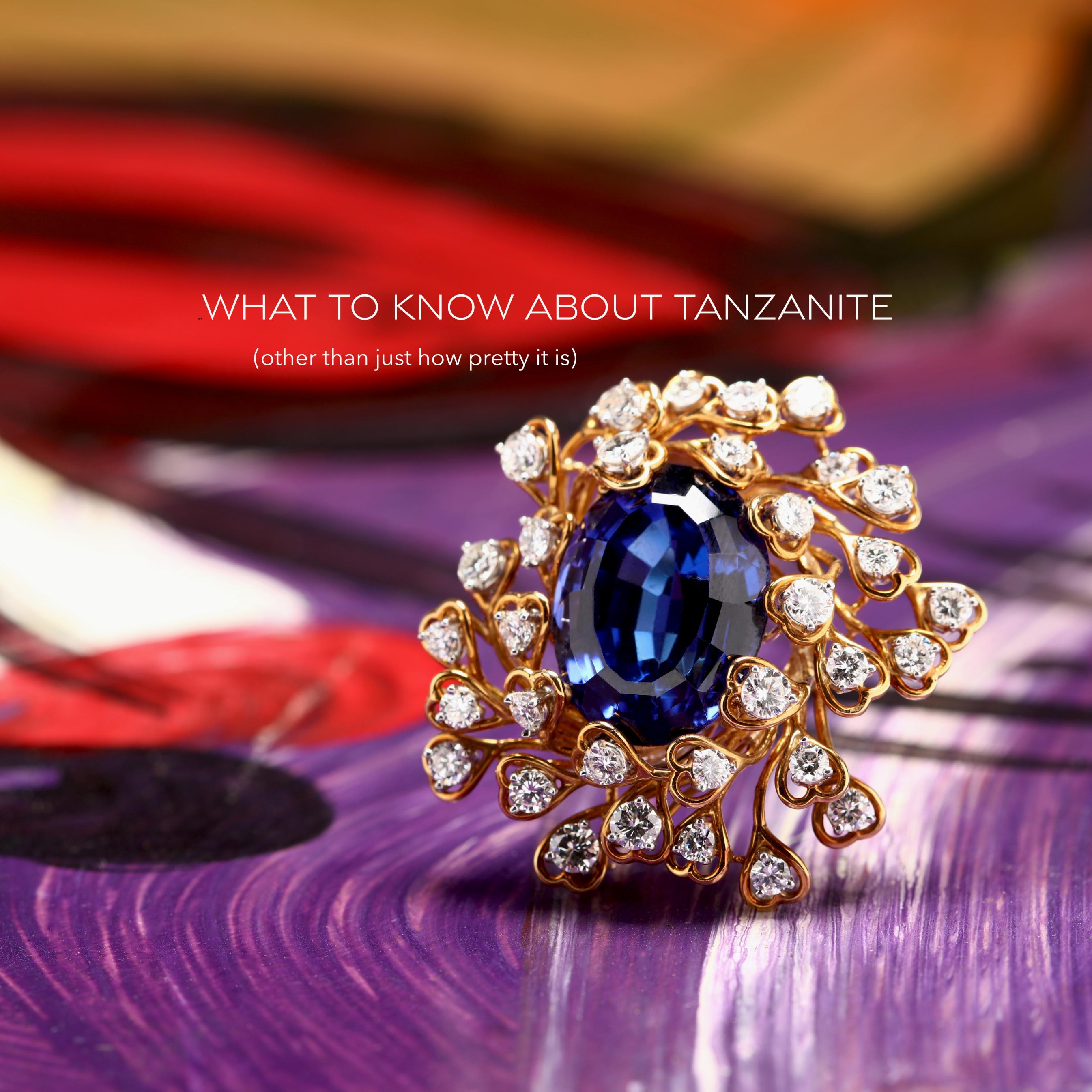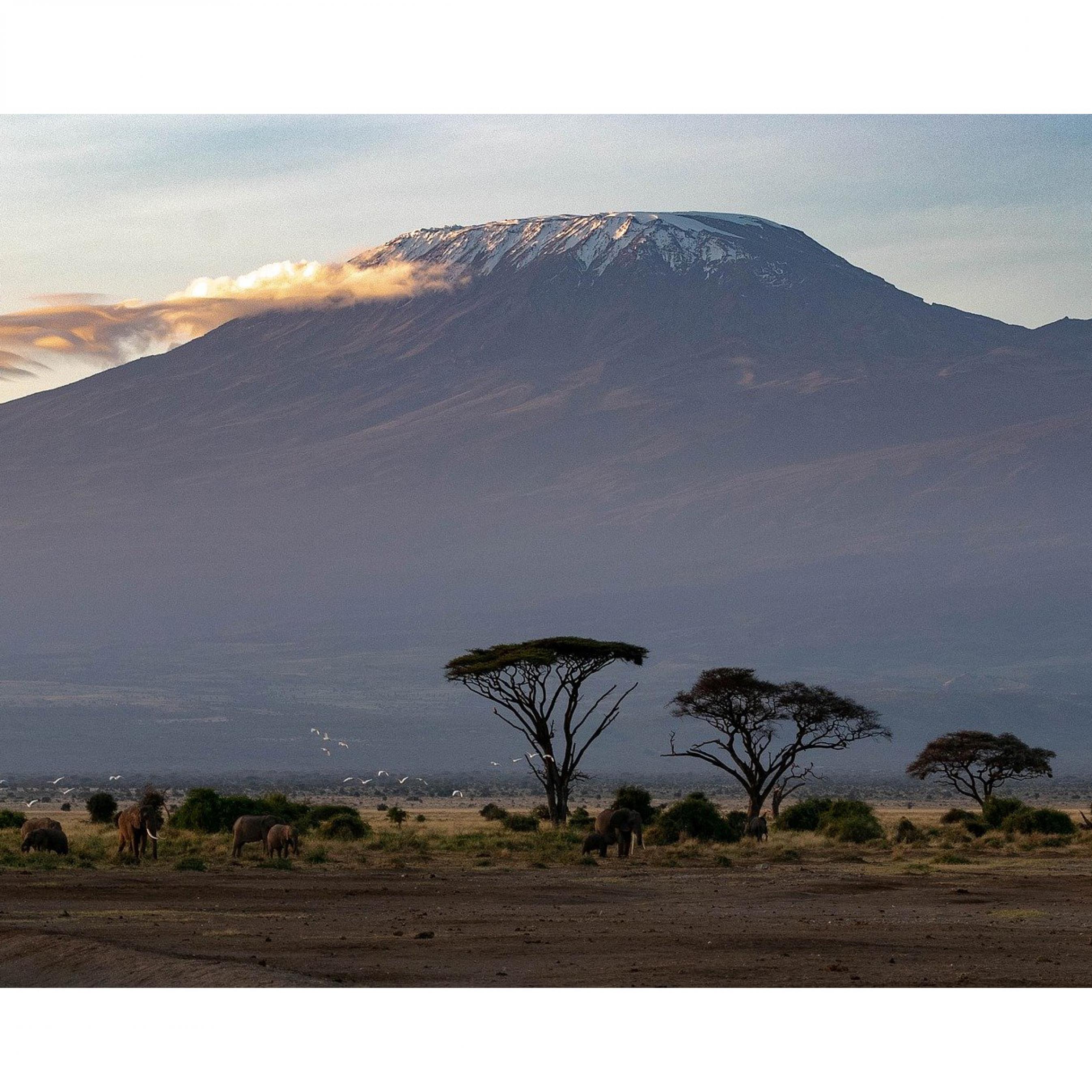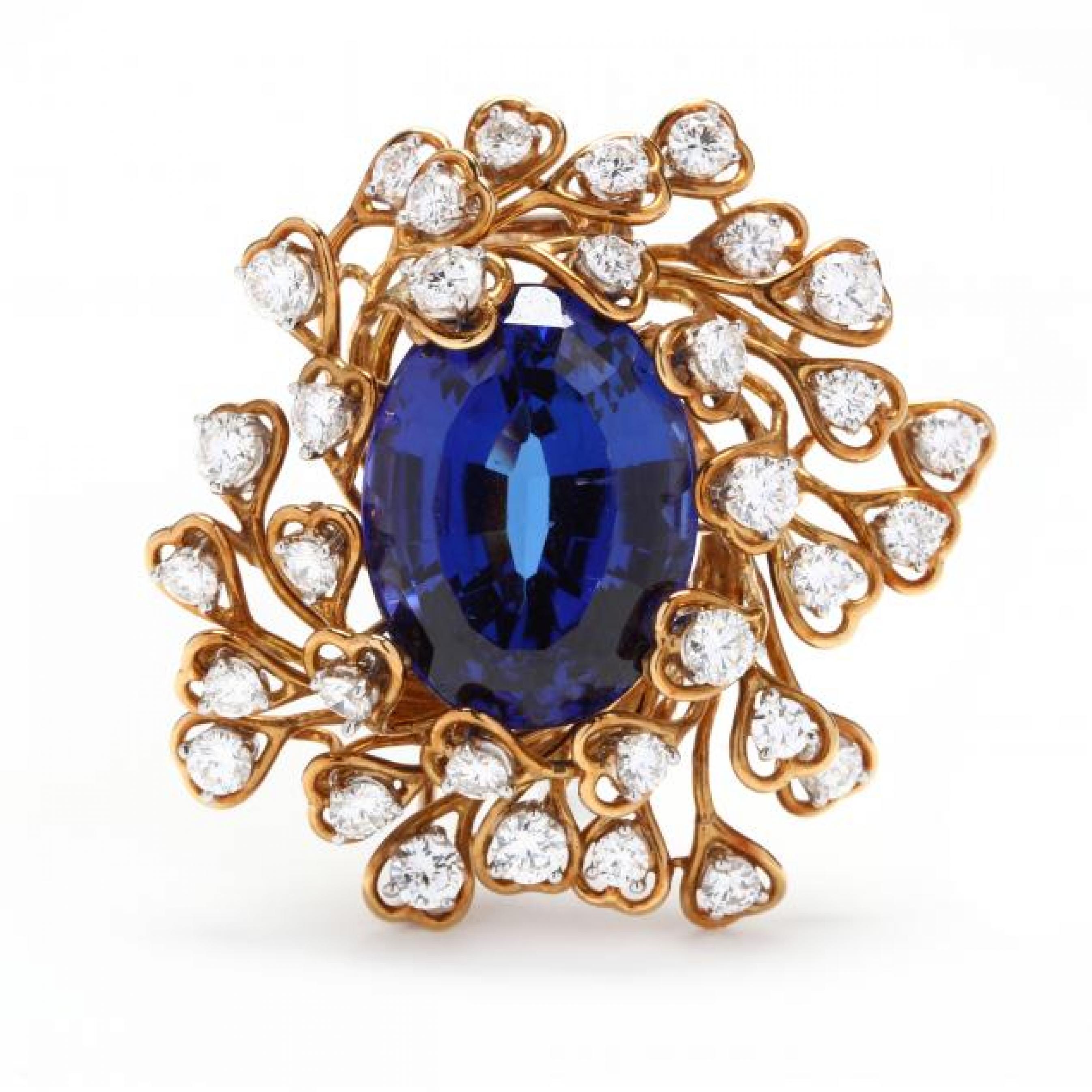
Gemstones are millenia in the making, but sometimes it takes a while for us to find them. In the case of the brilliantly blue, color-changing tanzanite, we've only been aware of its existence for a little over fifty years. Discovered by a Maasai herdsman in Tanzania in 1967, and quickly adopted by Tiffany & Co. as the star of a new jewelry line, tanzanite has been one of the darlings of jewelers who are drawn to saturated, nuanced colors. A stunning 25.38 carat tanzanite is the centerpiece of a Tiffany brooch being offered in our Important Fall Auction, and so here we let you in on what you need to know to understand the singularity of tanzanite.
The Tiffany & Co. Connection
When that Maasai herdsman unearthed the first dazzlingly blue tanzanite in the foothills of Mt. Kilimanjaro while he tended his cattle, he showed it to a Goan prospector who was in the area looking for rubies. The prospector thought he had been shown a cache of sapphires, and handed off the find to M.I.T. geologist John Saul, who gave samples of the stone to his father, Hyman Saul, the Vice President of Saks Fifth Avenue in New York. Hyman Saul walked the samples across the street to the Gemological Institute of America, where they were finally confirmed to be the first new transparent blue gem discovered in hundreds of years - a rare form of zoisite.
When that Maasai herdsman unearthed the first dazzlingly blue tanzanite in the foothills of Mt. Kilimanjaro while he tended his cattle, he showed it to a Goan prospector who was in the area looking for rubies. The prospector thought he had been shown a cache of sapphires, and handed off the find to M.I.T. geologist John Saul, who gave samples of the stone to his father, Hyman Saul, the Vice President of Saks Fifth Avenue in New York. Hyman Saul walked the samples across the street to the Gemological Institute of America, where they were finally confirmed to be the first new transparent blue gem discovered in hundreds of years - a rare form of zoisite.
At that time, Henry B. Platt, the great-grandson of Louis Comfort Tiffany, was the gem buyer for Tiffany & Co. He was so excited by the novel blue stone Hyman Saul showed him that he secured a large cache of the newly mined gem and promised to put all the weight of the Tiffany marketing machine behind its promotion. The result was the name "tanzanite" and a line of jewelry by Donald Claflin, to whose whimsical designs tanzanite was perfectly suited.

Henry B. Platt with Audrey Hepburn
While many jewelers have since made use of tanzanite's charms, it has often featured in the work of those who design for Tiffany. In 2018, Tiffany debuted a 50th anniversary line of tanzanite jewelry by Reed Krakoff, their chief artistic director, called Paper Flowers, to commemorate the stone's discovery.
1000 Times Rarer Than Diamonds
Tanzanite is the product of regional metamorphism, in which shifting tectonic plates collide and create areas of intense heat and pressure that, over millions of years, transform the plates' original minerals into something entirely new. The catch is that the something new is the product of specifically that unique blend of minerals that happened to be on those plates, which makes it highly unlikely that the product of their combination will exist elsewhere. Tanzanite has yet to be discovered anywhere other than the 7km by 2km site where it has been mined since 1967.
Tanzanite is the product of regional metamorphism, in which shifting tectonic plates collide and create areas of intense heat and pressure that, over millions of years, transform the plates' original minerals into something entirely new. The catch is that the something new is the product of specifically that unique blend of minerals that happened to be on those plates, which makes it highly unlikely that the product of their combination will exist elsewhere. Tanzanite has yet to be discovered anywhere other than the 7km by 2km site where it has been mined since 1967.

The foothills of Mt. Kilimanjaro where tanzanite is mined
All of which is to say, Tanzanite is extremely rare. Though often referred to as a "semiprecious" stone, it is actually far less common than its "precious" counterparts, diamonds, sapphires, and rubies. And the supply of tanzanite from its sole mining location is nearly exhausted. Some experts estimate that it will be mined out in 25-30 years. This fact, combined with the stone's growing popularity both in the United States and enormous markets like India and China has economists predicting that the market value of tanzanite can only increase in coming years.
View full results from The Important Fall Auction here.
View full results from The Important Fall Auction here.


